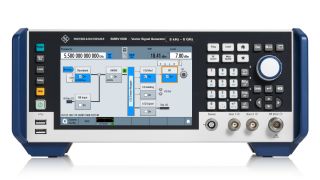WLAN IEEE 802.11p test solutions
Rohde & Schwarz test solutions support engineers in bringing V2X communications solutions to market with the required performance, quality and reliability.
WLAN IEEE 802.11 met many of the needs of vehicle-to-vehicle (V2V) or car-to-car (C2C) communications required for intelligent transport systems (ITS). For example, the OFDM scheme is well suited to mobile environments, and the capability for ad-hoc communications fits well to the behavior of C2C communications. The IEEE 802.11p amendment for wireless access in vehicular environments ratified in 2010 was becoming an integral part of the related ITS protocol stacks. For example, the amendment was defined for the US market in the IEEE 1609 WAVE standard, for Europe in the ETSI EN 302 665 ITS standard and for Japan in the ARIB STD-109 standard. After comprehensive tests of this technology in trials around the world, an increasing number of commercial cars and roadside equipment support V2V communication based on IEEE 802.11p.













